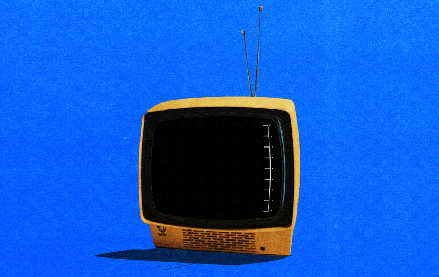Register by Jan 13 to save on passes and connect with marketers from Uber, Bose and more
Why the CTV ad industry needs to prioritize more native ad formats, with Walton Isaacson’s Albert Thompson

Subscribe: Apple Podcasts • Spotify
Connected TV may be the future of TV, but its primary ad product is pretty traditional: 15- and 30-second mid-roll spots that would look right at home on TV screens topped with rabbit-ear antennae. But that is changing — and needs to.
“What people aren’t doing is understanding the rules of engagement of every platform and developing agnostic to the platform based upon what the user or consumer tells you to do. So there’s probably no better way to describe it, but inherent laziness built in there,” said Albert Thompson, head of digital innovation at Walton Isaacson. He was speaking during a live recording of the Digiday Podcast hosted during Digiday’s CTV Advertising Strategies event, which was held on July 15 in New York City.
That’s not to say that the CTV ad industry has entirely resigned itself to legacy TV ad formats. There are pause ads and home-screen ads and shoppable ads and QR-code carrying ads, for example. And these CTV-native ad formats are gaining traction as more CTV viewership trends toward ad-supported services.
“While the invention for a lot of these things was almost a decade ago, the innovation is finally showing up now,” said Thompson. “People are starting to understand what they were doing wasn’t working, because they’d probably seen two years worth of data that said this is not really working and why are response rates the same way as a display ad.”
Also on this episode, what CBS’s cancellation of The Late Show with Stephen Colbert says about the media business and a look at OpenAI’s agentic AI offering.
Here are a few highlights from the conversation, which have been edited for length and clarity.
The CTV canvas
CTV is the killer app, meaning it gives the reward of linear with all the targetability of mobile and all the data science that underpins like web analytics. Everything is there. People aren’t packaging it and telling clients how to use the canvas. And we’re now starting to see the experimentation happen is because people just didn’t like it. They didn’t like the QR codes.
Vanity metrics -> business results
People can’t get beyond the bias in particular brands where [they] just want [people] to see [their] ad in full screen. No, what you want them to do is like it and buy your stuff. So I think people are caught up in the wrong thing. It’s not even vanity metrics. It’s like the vanity when a client says, “Oh, I want to see my billboard so I can drive into work.” No, what you want people to do is see your ad and buy your stuff.
The content consumption funnel
what people have to look at is the user journey of content consumption. It’s okay to have a full-screen ad because it looks amazing in the first sequence. In the second one, you tell them what it was about and why it matters, and you use a different ad format or a QR code. And then in the next sequence, you use a different format that gets them to transact, because that’s how we actually make choices.
Clicks -> memory
When you’re talking about show inclusion, that’s one context. When you’re talking about just a ad full screen, that’s another context. When you’re talking about an ad with a QR code fix, that’s another context. So we’re talking about a series of contexts to build the story in a narrative to be memorable – because the war is about to shift from clicks to memory.
More in Future of TV

Future of TV Briefing: 5 ripple effects that will shape the future of TV in 2026
This week’s Future of TV Briefing looks at the trends and developments that will shape the TV, streaming and digital video industry in 2026.

‘A year of loose ends’: Digiday editors share top takeaways from 2025
This year was filled with major developments – from Netflix’s planned WBD deal to Omnicom’s acquisition of IPG to Google’s ultimately cookie reversal – and Digiday editors Sara Jerde and Seb Joseph help to recap the year that was (and wasn’t).

Future of TV Briefing: How the future of TV shaped up in 2025
This week’s Future of TV Briefing looks back at the top topics and trends that overtook the TV, streaming and digital video industries in 2025.








